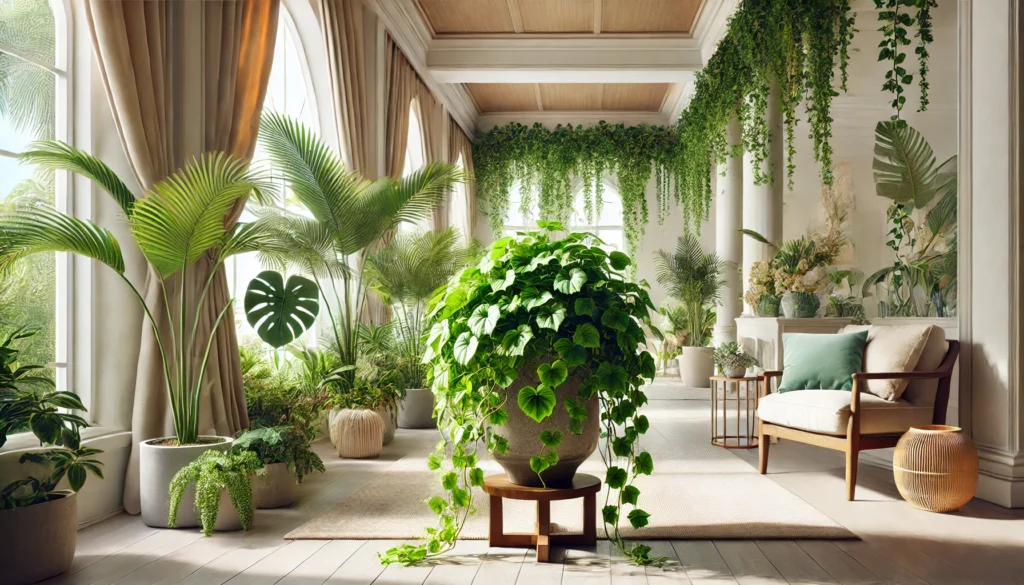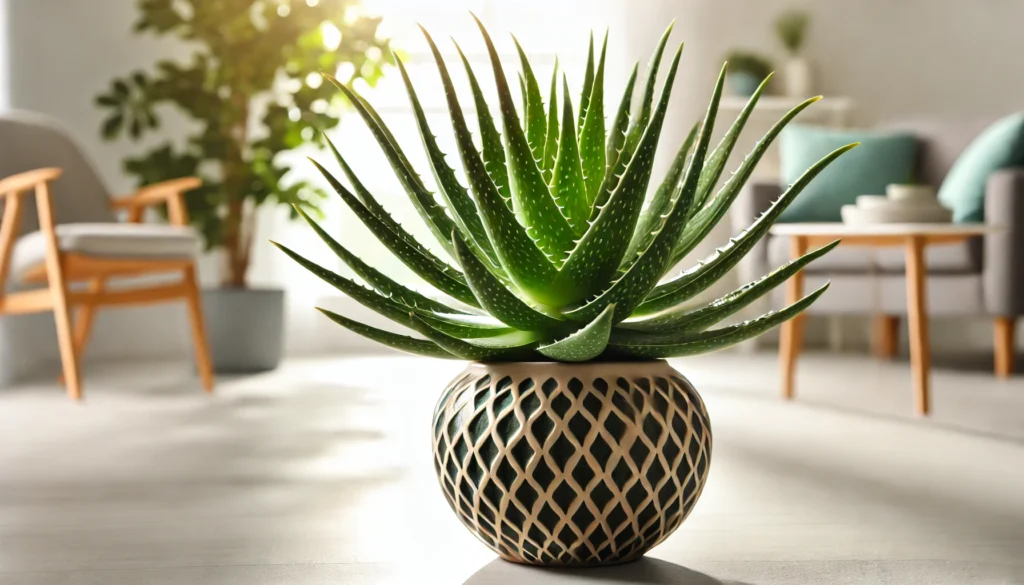
Grape Ivy, scientifically known as Cissus rhombifolia, is a popular choice among indoor plant enthusiasts due to its graceful trailing vines and lush green foliage. This perennial plant is known for its resilience and adaptability, making it a fantastic option for both novice and experienced gardeners. With the ability to grow up to 6 feet (1.8 meters) long, Grape Ivy can easily become the star of your indoor garden.
A Glimpse into the History and Ideal Growing Conditions
Native to South America, Grape Ivy has been cherished for centuries as an ornamental plant. It thrives in a variety of environments, which is why it has become a favorite in homes around the world. The ideal growing conditions for Grape Ivy include moderate to bright indirect light, a temperature range of 60°F to 75°F (15°C to 24°C), and high humidity. While it can tolerate lower light levels, providing it with adequate light will ensure its growth remains lush and vibrant.
Is Grape Ivy Toxic to Pets?
Unfortunately, Grape Ivy is toxic to pets, particularly cats and dogs. Ingesting the plant can cause symptoms like vomiting, drooling, and difficulty swallowing. If you have curious pets that are prone to nibbling on plants, it’s essential to place your Grape Ivy in a location that is out of their reach.
Safe Alternatives for Pet Owners
If you’re looking for a pet-safe alternative, consider plants like the Boston Fern (Nephrolepis exaltata) or Spider Plant (Chlorophytum comosum). These plants offer similar aesthetic appeal without posing a risk to your furry friends.
Best Practices for Caring for Your Grape Ivy
Caring for Grape Ivy is relatively straightforward, making it an excellent choice for those seeking a low-maintenance houseplant.
Watering and Humidity
Grape Ivy prefers consistently moist soil, but it’s crucial to avoid waterlogging, which can lead to root rot. Water your plant when the top inch (2.5 cm) of soil feels dry to the touch. Maintain high humidity around the plant by misting it regularly or placing it near a humidity tray. In dry climates, consider using a humidifier to keep the air around the plant moist.
Soil, Light, and Temperature
Grape Ivy thrives in well-draining soil with a slightly acidic to neutral pH. A standard potting mix with added perlite or sand works well. Place your Grape Ivy in an area where it can receive bright, indirect light. If natural light is limited, a grow light can be a good substitute. As mentioned earlier, maintain a temperature range of 60°F to 75°F (15°C to 24°C) for optimal growth.
Common Problems and How to Solve Them
Grape Ivy is generally a robust plant, but like all plants, it can encounter some issues.
- Yellowing Leaves: This often indicates overwatering. Ensure your plant’s soil is well-draining and allow the top inch to dry out before watering again.
- Leaf Drop: This can occur if the plant is exposed to drafts or sudden temperature changes. Keep your Grape Ivy in a stable environment.
- Pests: Common pests include spider mites and aphids. Regularly inspect your plant and treat any infestations with insecticidal soap or neem oil.
Propagation and the Benefits of Growing Grape Ivy
Propagating Grape Ivy is simple and rewarding. The most effective method is through stem cuttings. Cut a healthy stem just below a node, remove the lower leaves, and place the cutting in water or directly in moist soil. Roots should develop within a few weeks, and soon you’ll have a new plant to enjoy or share.
Aside from its aesthetic appeal, Grape Ivy offers benefits such as air purification and the ability to create a calming indoor environment with its lush greenery.
Final Thoughts
Grape Ivy is a hardy and elegant addition to any indoor plant collection. Its ease of care, combined with its ability to thrive in various conditions, makes it a perfect choice for anyone looking to add a touch of nature to their home. Just remember to keep it away from pets, and you’ll enjoy the beauty of Grape Ivy for years to come.



